Maverick Life
Chronicles of Chic: Style 2013.za
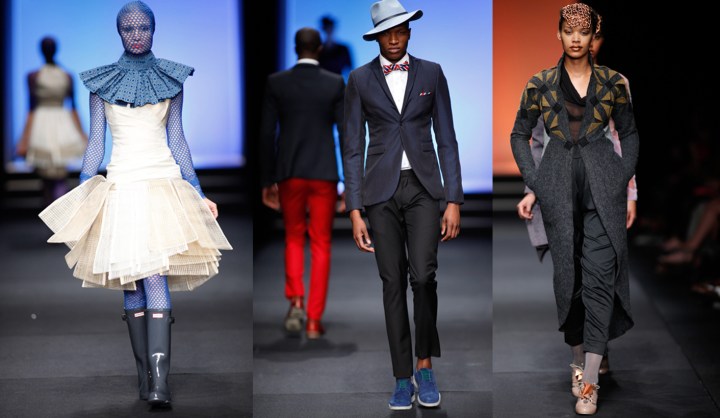
Cropped tops, Mad Men-like silhouettes and touches of fur might define what’s in for global Spring 2013, but the latest South African Fashion week(s), with our very own hint of drama, set the latest local trends. EMILIE GAMBADE looks at home-grown designs for Autumn/Winter 2013.
Two Johannesburg fashion weeks later and following the opening of giant retailer Top Shop in Sandton, South African fashion needs more than ever to prove its talent and its ability to be a sustainable, commercial and yet inspiring business.
For those of you who still believe that fashion is a flimsy, frivolous concept hidden behind heavy price tags – admittedly, it can be – or tucked in the vituperative comments of an ever-ready to offend Joan Rivers – which it sometimes is – think twice; fashion is a business unashamedly flirting with millions of dollars, prodigious craft and Haute Couture, respected brands and the addictive laws of regular fashion weeks and ready-to-wear retail.
In South Africa, the catwalk calendar is slightly confused, split between the flamboyant, show-off, well-exposed Mercedes-Benz Fashion Week Africa and the more understated, avant-garde and selective SA Fashion Week; two different owners, two different stories, picture David and Goliath perched on Louboutin heels and you have the idea.
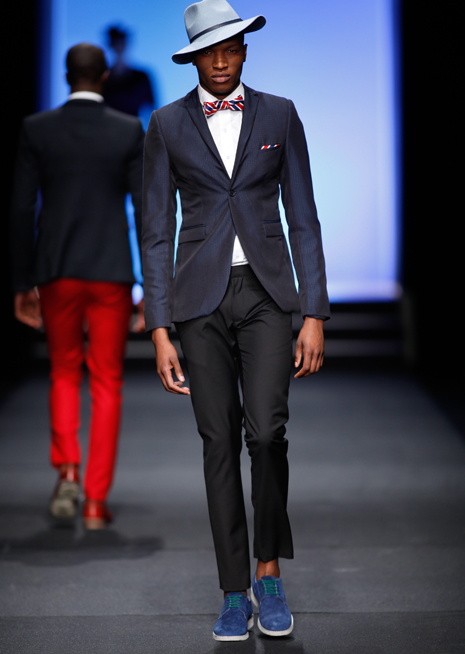
Photo: Skorzch
The Mercedes-Benz Fashion Week Africa, led by the Executive Chairperson of African Fashion International (AFI), Dr. Precious Moloi-Motsepe, is sponsored by the German car maker, the main backer of the international northern hemisphere’s fashion weeks (London, New York, Zürich, Berlin, Russia, but not Paris and Milan); it wishes to play in the big four league, and it opens its catwalk to other designers from the African continent and the diaspora.
It is as necessary as it is ostentatious: necessary because it has the means and power to bring South Africa on the exclusive and elitist fashion map. Dr. Moloi-Motsepe was recently invited to the Herald Tribune Luxury Conference, along the likes of (drumrolls please), Donatella Versace, Jean-Paul Gaultier, Manolo Blahnik (the man whose hands create vertiginous heels) Vivienne Westwood and Franca Sozzani (Vogue Italia Editor-in-Chief), a soupçon of the crème de la crème in fashion; an opportunity for Dr. Moloi-Motsepe to “offer a home-grown African perspective” on the “continent’s luxury offering”. Yet means and power never made elegance, and for all Dr. Moloi-Motsepe’s magnetic and stylish personality, the ranges presented at the MBFWA often, but not always, lack savoir-faire, attention to detail, storytelling and coherence; the balance is yet to be found between flamboyance and substance.
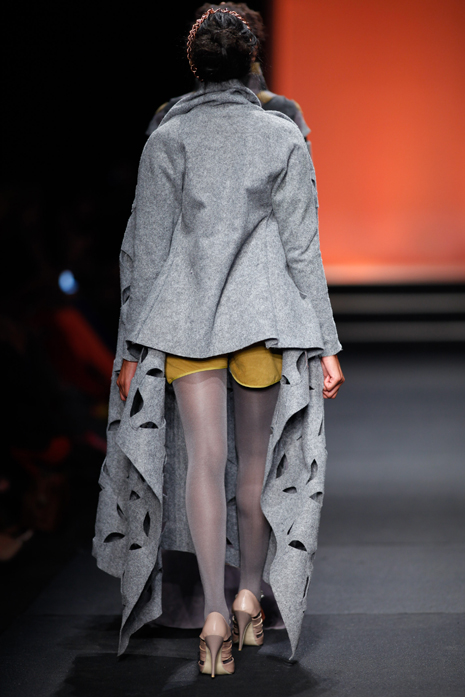
Photo: Black Coffee
Interestingly, Scott Schuman – the New Yorker behind the Sartorialist, famous for his street style snapshots – who was invited by Mercedes-Benz to cover the Johannesburg MBFWA, recently commented in the Women’s Wear Daily: “Johannesburg reminds me of a lot of cities, like Moscow, Buenos Aires and in Poland, places that had some kind of political or economic difficulty, or they were a communist country for a long time… A lot of the women here are very beautiful, very perfect in every way, but it lacks a certain amount of charm. It’s almost aggressive…”
A sad statement, certainly, as South Africa doesn’t have a shortage of creative and talented designers and inspired and inspiring fashionistas; yet the gap between the marketing and PR efforts unfurled at the fashion week and the actual designs presented on the catwalk can explain one’s disappointment. For all its noise, it still misses the true essence of local fashioning.
On the other hand, SA Fashion Week seems to emerge as a smaller player under the international fashion spotlight, but its unswerving attempts to show selected local designers are critical; Lucilla Booyzen, director of SA Fashion Week, focuses on the collections, making sure that what is presented matches international standards, that the stories told are coherent, the garments’ finishes painstaking and the collections not only saleable but wearable. Thirty-three designers with their very own identity, not the loudest and wildest and not all of them successful at pulling off a desirable collection, but definitely tomorrow’s possible fashion makers; what the show lacks in marketing muscle, it compensates in quality.
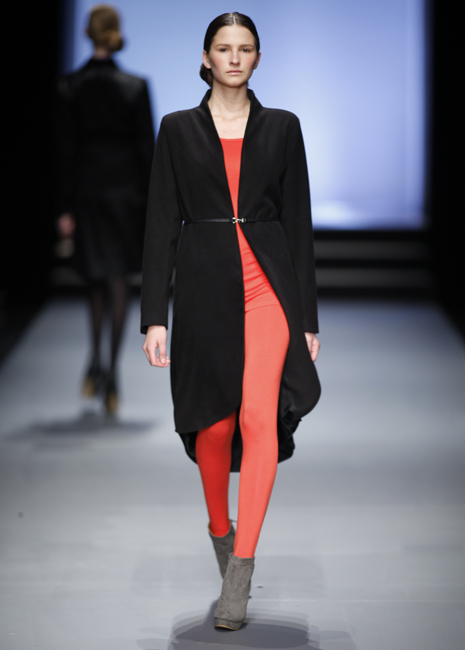
Photo: Colleen Eitzen
For this reason, the Daily Maverick decided to skim through the sleeker ranges presented at the SA Fashion Week to establish what tomorrow’s trends would be in the kingdom of South African fashion. Not an easy task, though, as the designers face many challenges to create their collections. Still, a savant mix of ingenious creativity and defiance of obstacles gives rise to more than few strong styles.
If there is one characteristic Africa is known for, it is its marvellous, unlimited ability to reinvent, facelift and customise objects. This season, (Autumn/Winter 2013), South African designers didn’t disappoint, with garments made from elaborate combinations of fabrics, revisited patterns and styles and clever dyeing techniques.

Photo: Fundudzi (Craig Jacobs)
The result? Zano Sithetho for Skorzch über-tailored jackets, waistcoat and pants revisiting vintage aesthetic à la Al Capone in bold and vivid colours; Craig Jacobs’ reinvention of the fish net fabric for his Fundudzi collection, stretched up to the model’s head, obvious in bright blue or hidden underneath a white sleeveless top; it is a concerto of originality.
Playing with their scissors, designers cut fabrics with the precision of goldsmiths. Black Coffee’s geometrical incisions, patterns straight from the window of a gothic cathedral, bring depth to the garments; Bianca Warren’s perforations, very similar to broderie anglaise, give a girly touch to the range. Naked Ape collaboration with Merweline van der Merwe was all about vertical cuts following the bodyline and cleverly highlighting the bright linings.
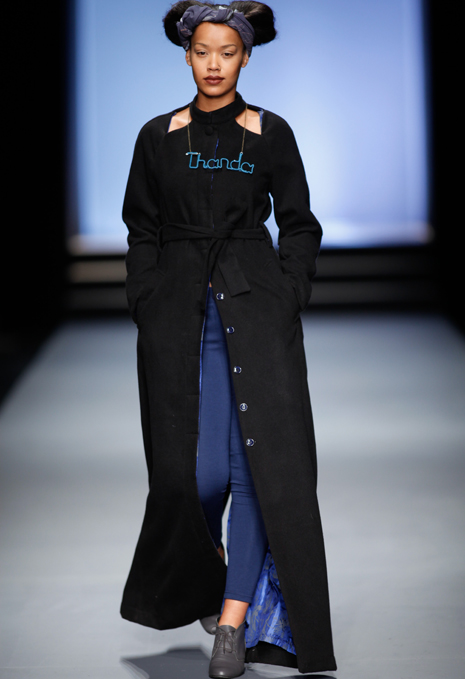
Photo: Amanda Laird Cherry
The layering is also strong and wraps the body with warm fabrics and soft tones and touches of red as seen at Clive Rundle. His collection, a careful I-don’t-care look that will turn any woman into a chic bohemian, uses velvet, satin, tulle juxtaposed on the body; this is the statement of a woman who can’t make up her mind and has the audacity to show it. It can be dangerous, as layers sometimes turn into faux pas, but it certainly is daring. Ephymol played with textures and tone-on-tone prints to create a layering effect that is modern and masculine.
Also hot-off-the-catwalks, feminine peplums as seen at Craig Jacobs, House of Olé and Kottin & Twille; Jacobs created high-waist skirts with flared ruffles running off on a tangent, epitome of simple elegance; it has an air of déjà-vu and worn over Hunter boots, it attempts to break the conservative look but sadly ends up messing up the overall allure. House of Olé bright red jacket belted with a peplum flirt with military panache while the soft gold ruffles falling off the torso at Kottin & Twille elongate the hips and the legs.
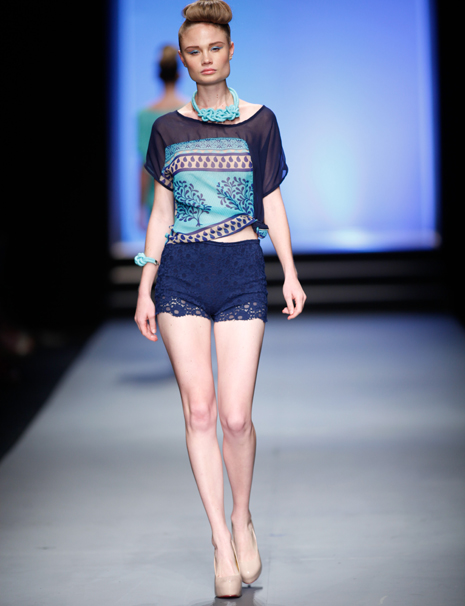
Photo: Bianca Warren
With Autumn comes colder weather and next season, coats metamorphose into dresses; Amanda Leird Cherry’s capes have an air of masculinity, but buttoned up and belted with a leather strap, they can certainly serve as dresses. Colleen Eitzen’s black minimalist coat falls on the body like a glove; it’s understated, graceful and doesn’t need anything else. But the laurels go to Jacques van der Watt for Black Coffee, who designed impeccable asymmetrical coats in grey felt, that capture the body with majesty.
If there is one major trend to remember in the South African fashion landscape this season, it would have to be, once again, the designers’ incredible ability to make the best out of very little. Booyzen explains that “because of the lack of sophisticated fabrics available in South Africa, the designers focussed more on natural fabrics, cottons, linens, silks; (they) treated, printed, embroidered, tie and dyed and reworked fabrics to get the desired looks.”
No matter the lack of knowledge, the non-existent access to luxurious fabrics, the down-spiral journey of our manufacturing industry – local designers work hard at transcending the obstacles and bringing collections that are ingenious, original, unique and desirable. South Africa’s got talent, beyond any doubt. DM
















 Become an Insider
Become an Insider